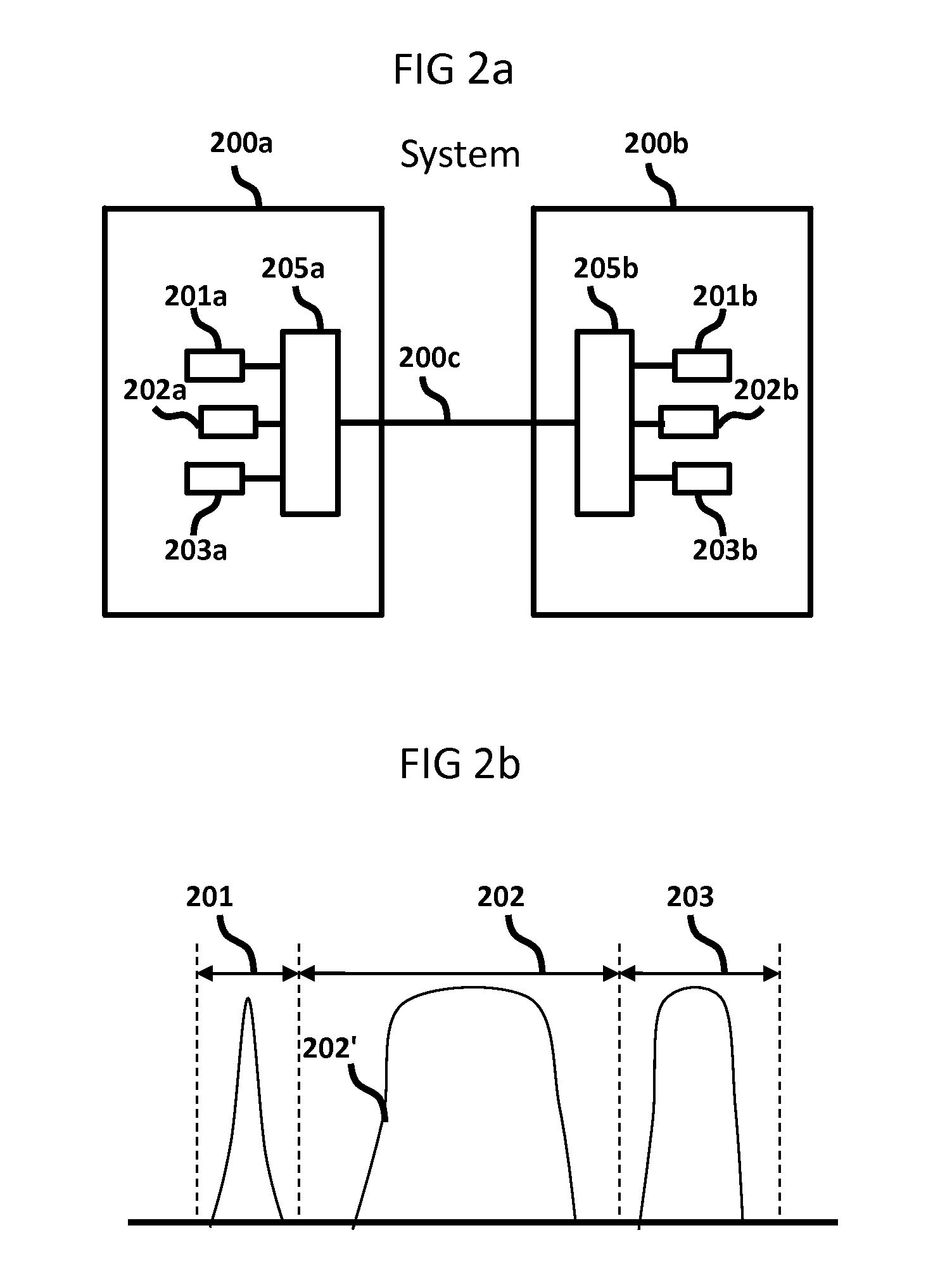Optical Spectrum Recovery
a spectrum recovery and optical technology, applied in the field of optical spectrum recovery, can solve the problems of inefficient use of available spectrum, stranded spectrum, and no adequate contiguous portion
- Summary
- Abstract
- Description
- Claims
- Application Information
AI Technical Summary
Benefits of technology
Problems solved by technology
Method used
Image
Examples
Embodiment Construction
[0030]The present invention will now be described more fully, using a subset of its embodiments. Additional embodiments will be apparent to those skilled in the art and are covered by the claims of the invention.
[0031]Optical communications systems transmit optical signals from an optical origination point to one or more optical termination points. These optical signals may be modulated in some fashion in order to carry information. An optical signal may be characterized by its center frequency, state(s) of polarization and its spectral width. The minimum portion of the optical spectrum required by a given system to be allocated for the conveyance of a given optical signal from an origin to one or more termination(s) is referred to as an optical channel, which is often, in context, simply referred to as a channel. More specifically, allocation refers to one or more portions of optical spectrum reserved for the channel and within which the system must constrain the optical signal. Th...
PUM
 Login to View More
Login to View More Abstract
Description
Claims
Application Information
 Login to View More
Login to View More - R&D
- Intellectual Property
- Life Sciences
- Materials
- Tech Scout
- Unparalleled Data Quality
- Higher Quality Content
- 60% Fewer Hallucinations
Browse by: Latest US Patents, China's latest patents, Technical Efficacy Thesaurus, Application Domain, Technology Topic, Popular Technical Reports.
© 2025 PatSnap. All rights reserved.Legal|Privacy policy|Modern Slavery Act Transparency Statement|Sitemap|About US| Contact US: help@patsnap.com



